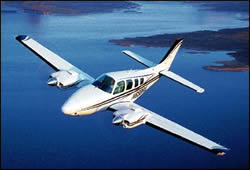Think you know your stuff? Take our quiz and find out:
1. The time that an aircraft first moves under its own power for the purpose of flight until it comes to rest after landing.
2. What is required before you may act as pilot in command of an airplane with more than 200 hp if you logged no pilot-in-command time in a high-performance airplane prior to August 4, 1997?
a. An FAA flight test in the airplane
b. 15 hours of instruction in the airplane
c. Three solo takeoffs and landings within the previous 90 days
d. Receive and log ground and flight training from an authorized instructor in either a high-performance airplane or an approved flight simulator or flight training
3. You’re flying IFR over a designated mountainous area and you request a VRF-On-Top clearance. You must stay at an altitude of __ feet above the highest obstacle within a horizontal distance of __ nautical miles from the course to be flown.
a. 1,000’; 2 NM
b. 1,500’; 2 NM
c. 2,000’ ; 2 NM
d. 1,000’; 4 NM
e. 1,500’; 4 NM
f. 2,000’; 4 NM
4. Assume you are making a flight carrying passengers, and official sunset will occur at 1900 local time. If you do not meet the recent flight experience requirements for night flight, you must be on the ground no later than:
a. 1900
b. 1930
c. 2000
d. 2030
5. What exception, if any, allows you as a private pilot to act as pilot in command of an aircraft carrying paying passengers?
a. There is no exception
b. If the passengers pay for the operating expenses
c. If a donation for the flight is made to a charitable organization
d. If the flight is made within a 50 n.m. radius of the airport origination
6. Except when necessary for takeoff and landing, when you are flying over congested areas you must maintain an altitude of at least:
a. 1,000 feet from any obstacle
b. 1,500 feet above any obstacle
c. 1,000 feet vertically and 1,000 feet horizontally from the nearest obstacle
d. 1,000 feet above the highest obstacle within a horizontal radius of 2,000 feet of the aircraft




